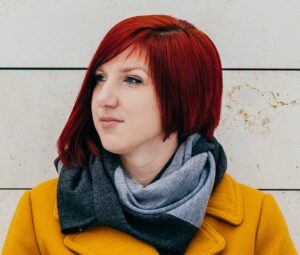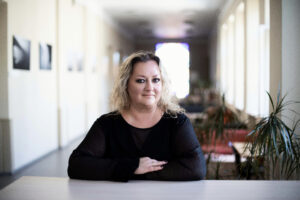According to an international team of educators, active learning methods, such as problem-based learning, project-based learning, and challenge-based learning are necessary to provide engineering students with the skills to tackle global issues. Of the above-mentioned, challenge-based learning is the most suitable for sustainability education.

“Challenge-based learning is often focused on the challenges that have a global impact. The students, who accept the challenge, often don’t know what the solution will be. The facilitator is keeping them from focusing on a solution too early, and encourages them to analyse the challenge from multiple points of view, and from different scientific perspectives,” says Vilma Sukacke, a researcher at Kaunas University of Technology (KTU), Lithuania.
Such a learning/teaching approach is very fitting to sustainability education, which, according to various scholars, calls for a contextual, problem-oriented, reflective, interdisciplinary, collaborative, participatory, ethical, and empowering learning environment. In other words, educators have to shift from more traditional teacher-centred education to becoming instructional designers of student-centred education.
Aiming to evaluate the efficiency of such approaches, a group of researchers from Lithuanian, Danish, German, Portuguese and Spanish universities conducted a systematic literature review, exploring the three active learning methods, i.e., project-, problem- and challenge-based learning according to the ADDIE (analysis, design, development, implementation, and evaluation) framework.
Although educators agree that problem-based learning (PBL), project-based learning (PjBL), and, more recently, challenge-based learning (CBL) are efficient in teaching students to integrate technology in real-life situations and improving their transversal skills, such as teamwork, communication and conflict resolution, the application of these methods in the classroom may be challenging for both sides.

“In my practice, I have noticed that sometimes students are questioning innovative learning methods and are considering them as a sort of a “game”. As these classes often take place in a playful environment, full of different pencils, colourful notes, and building blocks, it’s difficult for the students to take them seriously. Therefore, it’s very important to communicate the methods and the goals to the learners very clearly,” says Professor Saule Petroniene from KTU Faculty of Social Sciences, Arts and Humanities, a co-author of the study.
According to her, successfully applying unorthodox teaching methods is a challenge for a beginning teacher. However, the effort pays off, especially, when students are continuing their activities outside of the scope of the school project and focusing on solving real societal issues.
Researchers believe that the implementation of CBL, PjBL, and PBL requires a paradigm shift, where organisation, staff, and students change their view of education and learning. In this process, both teachers and students need to apply new skills and take on roles that they might not need before.
“Both students and teachers face difficulties in accepting their new roles – a teacher is no longer the main provider of knowledge, and a student is not a passive listener, who absorbs the knowledge as a sponge,” says Sukacke, who was interviewing the ECIU University (an EU-funded European University applying CBL in its activities) teachers who implemented CBL in their classes.
According to Sukacke, in CBL, both teachers and learners face a strong feeling of uncertainty – at the beginning, it is not clear what resources will be needed and what solution will be implemented (which contradicts our urge to find it at any cost, as soon as possible). Extensive multidisciplinary analysis of the challenge is at the core of CBL. Therefore, often times more consultations are needed during the intermediate stages of challenge-solving and this requires additional time and skills from the facilitating teacher.
However, the educators believe that the benefits of active learning methods outweigh the challenges; with the greatest gain being sustainable education – the graduates become continuous learners themselves, enabled to continue adapting their skills and competencies to different challenges they face in real-life.
“Recently, one of my former students greeted me by saying how grateful they were for solving a problem related to a real-life situation in a student dormitory. After finding the solution in the class, the students were able to apply it in reality. I am sure, that many students have similar feelings – by learning to solve real problems, they obtain different results both in their studies and outside the classroom. One of the main skills in these classes is learning to work in a team,” says Petroniene.

Dr Lina Gaiziuniene, a co-author of the study is convinced that the contemporary learning/teaching paradigm is based on the teacher’s support allowing the students to grow as independent learners.
“Cooperation in this process is crucial. It allows the teacher to understand the student better – his or her goals in terms of knowledge, skills, and studying preferences. A student and a teacher become partners and this motivates both parties involved to perform as well as they can. This, in turn, increases the motivation,” says Gaiziuniene, a researcher at KTU Faculty of Social Sciences, Arts and Humanities.
According to Sukacke, the teachers, who applied CBL in their classes, had an increased motivation to apply other teaching innovations; the students developed numerous soft competencies and achieved their study goals.
“At ECIU University, we apply CBL to solve the challenges related to the 11th UN Sustainable Development Goal, Sustainable Cities and Communities. The solutions to the challenges, developed at KTU and other ECIU University members, are already applied or will be applied in the real-life context by the industries that presented the challenges. In such a way, a meaningful real change is created,” says Sukacke.
According to the authors of the study, CBL, the newest from active learning approaches, is the most suitable for solving sustainability-related issues. The challenge-based learning experience is typically multidisciplinary, and involves different stakeholders and the teams formed during the challenge-solving may co-work together on its implementation after the classroom activities had ended. Even though, CBL shares some key features with other active learning methods, it goes beyond in that the challenge is not fully predefined; the learners and the community members participate in its co-creation.
As sustainability-related challenges are always multidisciplinary and involve different stakeholders and their solutions are not obvious at first glance, CBL may be the most suited approach to sustainability education.
The above-described study “Towards Active Evidence-Based Learning in Engineering Education: A Systematic Literature Review of PBL, PjBL, and CBL” was published in Sustainability 2022, 14(21), 13955 and can be accessed here.